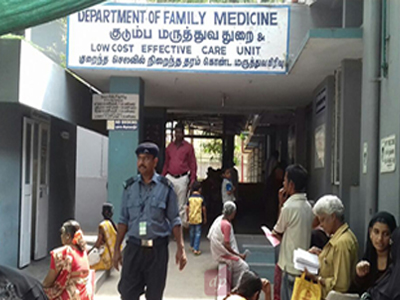Ayushman Bharat: The mirage of NHPS
There is a rising necessity of technology and innovation to slash healthcare costs that India faces providing health cover to its population.
The Union Budget 2018 addresses the National Health Protection Scheme (NHPS) under Ayushman Bharat. The scheme aims at a hassle-free implementation of the “world’s largest government-funded health programme, hoping to annually cover ₹10 crore families and provide ₹5 lakh insurance. The initial corpus of ₹2000 crore has been allocated for the programme, where NITI Aayog has projected the cost to be as high as ₹12000 crore in aggregations.
Healthcare in India isn’t always tackled with the best of efficiency. The segmental increment in budgetary outlay is trifling this year compared to last. The revised estimates were significantly higher than the allocations last year, whereas on some key components (National Health Mission) the allocations show a plummet.

The trend inference is twofold: The allocations were insufficient to meet the budgetary requirements of the health department. The offshoot of the current public health expenditure is mired in administrative mismanagement and ineffective operations. The 2017-18 estimates of ₹48,878 crores begged a revision at ₹53,198 crores, where the current allocation stands at ₹54,667 crores. Although registering an 11.8 percent increase from last year’s allocation, it stands at only around 2.6 percent increment over the revision. The 2016 government announcement to launch a healthcare programme covering up to lakh rupees per family resulted in the revamped 2008 project Rashtriya Swasthya Bima Yojana. But the RSBY caps its covers only at ₹30,000 a year, whereas the amount allocated in 2017 was ₹1,500 crore.
The assignment of prominence to insurance companies and inefficiency in reaching out to the absolute poor are few of the RSBY misses that run risks of getting mirrored in this programme.
Studies reveal how the RSBY managed a low enrolment owing to design flaw pro-poor health security scheme. Trends indicate that hospital admissions increased by 59 percent amongst the insured, but no reduction in out-of-pocket expenditures and impoverishment.
Countries like Canada and the UK provide health security based on their own development context – the provision of health services by paying fully for services availed. The commonality tying such countries to India is the governments’ obligation to its citizens ensuring the relief from the inability to pay for medical treatment. This context invites enthusiasts to immediately recall a comparison of NHPS to the UK’s longstanding National Health Services (NHS).
Britain’s model of NHS in all essence embodies a truly socialized system. Additional to being free at the point of use for anyone resident in the UK, the service is provided by the government and is in turn funded by the taxpayer. Appointments, treatments and almost every prescriptive drug are free to the patient, paid for only through taxes. For any such health system to be operational, as opposed to Britain’s 83.5 percent India’s expenditure at 32 percent is counted as one of the lowest in the world. The reason stems from the fact that almost three-quarters of the Indian populace aren’t insured.
Dr. Jayati Ghosh, Professor at JNU, classifies the NHPS problem in a two-fold manner. She points out the unnecessary privatisation of the healthcare system, and reveals the glaring underfunded organizational chaos therein. “Healthcare is a sector which suffers from strong information asymmetry. It is imperative to bring down costs in such a basic service, which is why a public health service is clearly a better option,” she says.
Calling the move highly anti-federal, Dr. Ghosh cites the shortcomings of previous policies like Sarva Shiksha Abhiyan and RSBY to infer that the 40 percent state contribution to NHPS heavily undermines the existing state healthcare systems.
The traditional health insurance scheme that the NHPS might ape from the RSBY proves to be economically and administratively troublesome, that the voucher-based system in the NHS clearly does away with. The costs incurred are driven up by over-diagnosis and pushing money into private health sectors. What NHPS seems to be doing, is raise additional health expenditure for the poor, while enabling higher profits for the private healthcare sector. The scheme can improve on health models only if each entitled household runs up the full ₹5 lakh endowment on benefit, thus utilizing the premia paid.
The NHPS relies on a dangerous policy. Global empirics furnish plenty proof of escalated overall health expenditures and distorted ethical practices when health policies rely on insurance for private services. Evaluations show that RSBY has failed to reduce expenses and increase access for services. For primary care, the strategy is to depend on public services which are currently inadequate and need more resources.
